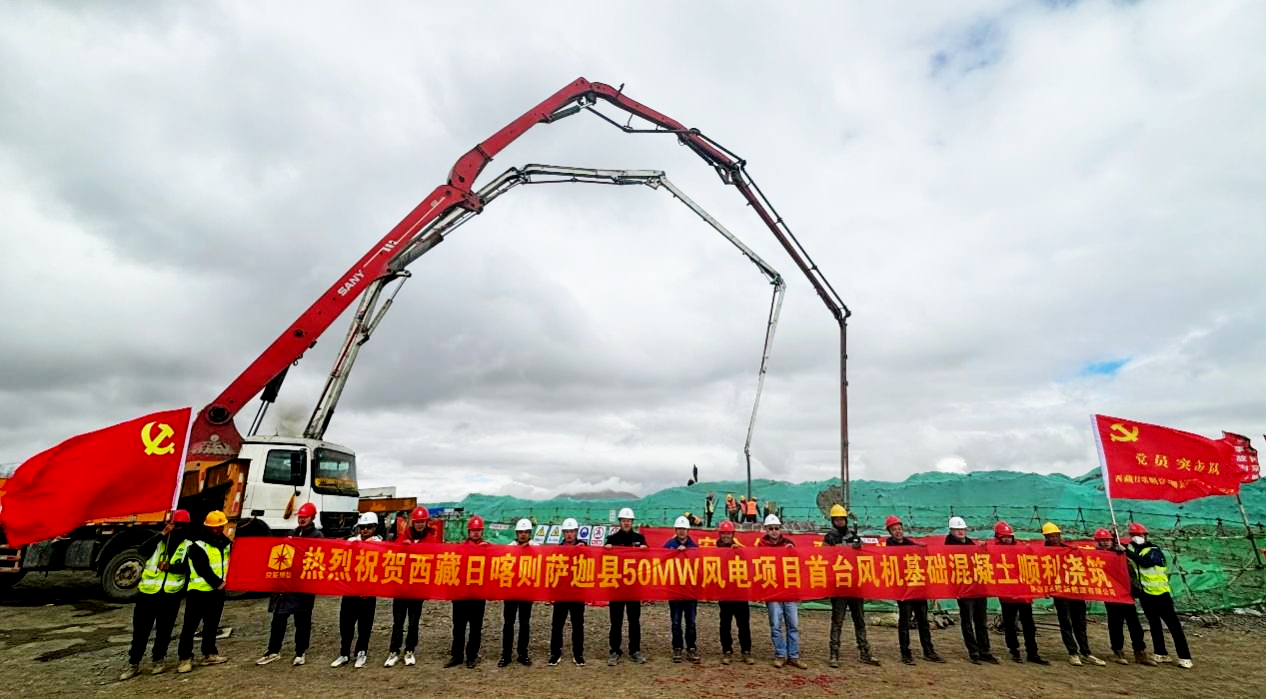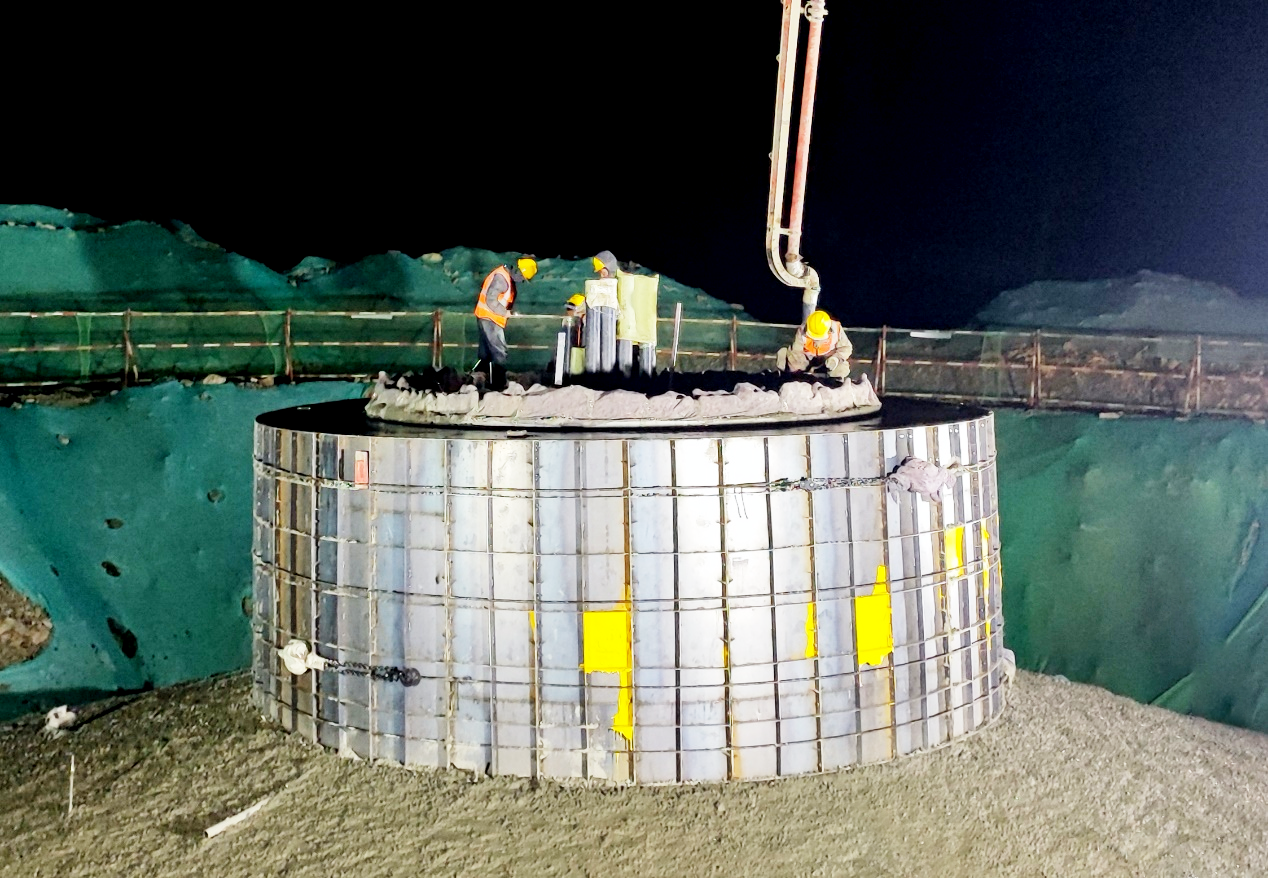At 22:48 on May 24, after 16 hours and 48 minutes, the foundation pouring for the first wind turbine of Beijing Energy International’s first ultra-high-altitude wind power project—the 50 MW wind power project in Sajia County, Rikaze, Xizang—was successfully completed. This marks the official entry into a crucial construction phase for the company’s first wind power project in Xizang.

Since the project commenced on March 20, 2024, Beijing Energy International Zangneng Company has meticulously planned and organized the construction activities, including road construction, site leveling, foundation excavation, rebar production, and mass concrete pouring. For the foundation of the F8 turbine, 216 anchor bolts were installed, 60.7 tons of rebar were produced and installed, and over 585 cubic meters of concrete were poured.
The project is located on the northern slopes of the Himalayas in Sajia County, Rikaze, Xizang, on the “Roof of the World”—the Qinghai-Tibet Plateau. It is only 140 kilometers from Mount Qomolangma. The construction site is characterized by high altitude, cold temperatures, low oxygen levels, and variable weather conditions, with an average altitude of 5,000 meters and a total area of 18 mu (about 2.97 acres). The project plans to have a total installed capacity of 50 MW, utilizing 13 wind turbines, each with a capacity of 4 MW. A new 110 kV booster station will be built to connect with the state grid’s Sajia 110 kV substation. Upon completion, the project is expected to produce approximately 120 million kWh of green electricity annually, save 36,000 tons of standard coal, and reduce carbon dioxide emissions by about 99,000 tons. This will significantly alleviate local energy pressures, promote high-quality local economic development, and contribute to the establishment of a new clean energy development pattern in Tibet, characterized by “one base and two demonstrations.”

The successful completion of the foundation pouring for the first wind turbine is the result of countless days and nights of hard work and dedication by the company’s project team. During construction, the team overcame numerous challenges including high altitude, low oxygen levels, cold temperatures, extreme weather, and poor construction conditions. They carefully selected construction teams, scientifically devised construction plans, and reasonably scheduled work hours to ensure the simultaneous management of safety, quality, progress, cost, environmental protection, soil and water conservation and social stability. This has laid a solid foundation for the subsequent installation of wind turbines and the timely grid connection of the units.
Going forward, all personnel involved in the project construction will continue to maintain their spirit of perseverance, adhere to the safety concept of “life first, safety foremost,” and work diligently to advance the project. They will continue to accumulate experience in engineering construction in ultra-high-altitude areas, complete subsequent construction milestones on schedule, and establish the company brand on the plateau at an altitude of 5,000 meters!